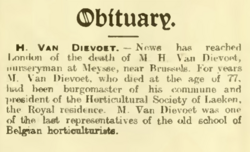
Vertical Files, sometimes called Subject Files, are a collection of miscellaneous documents and ephemera that are put in file folders which are then stored in filing cabinets and cataloged by surname or by subject name. These files are a hodge-podge of records and could contain just about anything that can fit into a file folder. Vertical Files are referred to as “Fonds” in some archives in Canada and Europe.
Vertical files can be the place where documents and information can be found to help you with your genealogy research and even help to tear down that genealogy brick wall. The Society of American Archivists defines Vertical Files as “materials comprised as an artificial collection, often of an ephemeral nature and used for ready reference”.[1] The term ephemera is defined by the SAA as “Materials usually printed documents, created for a specific purpose, limited purpose, and generally designed to be discarded after use.”[2]
Research your ancestors on MyHeritage
Vertical file basicsVertical file basics
Most, if not all, Vertical Files are compiled and stored in this manner:
- Documents and ephemera are placed in archival file folders
- Archival file folders are stored or filed in filing cabinets
- Files are labeled with either a surname or a subject name
- An index is compiled listing the surnames and subject names for researchers
Accessing vertical filesAccessing vertical files
Vertical files can be located in many archives, libraries, historical societies, genealogical societies, university archives and other repositories that hold archived records. The repository should have an index of its vertical files available on their website or at the facility; this index will only include a listing of the surnames and subject names. The individual documents contained in the file folders will not be listed in the index. Also, the specific folders that are of interest will have to be requested to be pulled by the archives staff.

Requesting and handling vertical filesRequesting and handling vertical files
Vertical files are not normally accessible to researchers in the research area but are stored behind closed doors in what is called the archives stacks. Most archives have strict guidelines when requesting and handling vertical files. In order to protect the records, adherence to the repository's guidelines is typically necessary, which often encompass the following aspects:
- When you have decided on the files you want, ask the staff to pull those files for you to examine.
- The repository could require you to fill out a pull slip or a request for records form before fulfilling your request.
- The staff will bring you the vertical files one or two at a time. Once you have looked through those files, they will bring you more if you have requested more. Do not be surprised if they only bring you one folder at a time.
- If you want copies of documents from the vertical files, you may be required to let the staff make the copies for you. Some repositories will not allow you to make copies of the original records yourself.
- Be sure to replace all documents ba into the file folder when you are finished examining them and either leave the folders on the research table or return them to the archive staff.
- Do not be surprised if the staff asks you to wear gloves while handling the document in the vertical files, especially if there are original photographs in the files.
- Do not write on any of the documents in the vertical files. If you find incorrect information on a document, do not make any corrections, even if it is a document photocopy.
Vertical files could contain anythingVertical files could contain anything

When opening up a vertical file, it’s like opening up a time capsule. While there is no certainty about what is going to be found, there might be something that can help furthering the genealogy research.
- Vertical files are a catch-all or hodge-podge of documents that are normally singular in nature and don’t belong to any other record collection.
- Newspaper clippings of obituaries, marriage announcements and other articles are a very popular vertical file find. Most of the time, however, the name and date of the newspaper is missing or has been clipped off.
- Donated family histories or family group sheets are usually placed in vertical files.
- Receipts, invoices and business letterheads are also a mainstay of vertical Files.
Bits ‘n’ piecesBits ‘n’ pieces
- Vertical files are compiled from individual documents that are donated to a repository. They usually come into the repository as bits ‘n’ pieces, not belonging to any larger record collection.
- Family histories and family group sheets are donated by genealogists. If you donate your family history or family group sheets to an archive, be sure to include your contact information on the documents so any other researchers who see the records can contact you.
- Some repositories compile their vertical files themselves by clipping items from the current local newspaper on a daily or weekly basis. Items such as obituaries, marriage announcements and other local news items are clipped and placed in the proper surname or subject name folders for patrons to use for their research.
Explore more about vertical filesExplore more about vertical files
Unfortunately, there are not many repositories that have digitized the contents of their vertical files and made them available online; one example of a repository that is digitizing their collection of vertical files and putting those records online for free is North Carolina Family Records at the State Library of North Carolina. Alternatively, there are some repositories that have their indexes online, for example:
- The newspaper collections on MyHeritage include information about historical events, births, deaths, marriages, businesses, naturalizations, court cases, and more.
- Montgomery County, Tennessee Archives
- Library of Congress
- WorldCat an extensive online resource that provides global access to trustworthy, unique materials from libraries worldwide.
References
- ↑ "vertical file". Dictionary of Archives Terminology
- ↑ "ephemera". Dictionary of Archives Terminology

